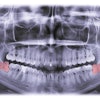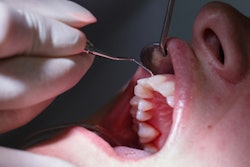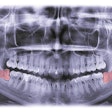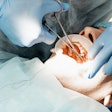
Healthcare providers are being asked to use antibiotics less often to reduce the prevalence of antibiotic-resistant bacteria, but are dentists getting the message? A new study found good and bad news when it comes to how dentists are using preventive antibiotics in patients at risk for infective endocarditis.
Infective endocarditis is a potentially deadly infection on the surface of the heart and is responsible for about 1 in very 1,000 hospital admissions in the U.S. In 2007, the American Heart Association issued clinical guidelines for the use of prophylactic antibiotics in patients at risk for this condition with the goal of reducing antibiotic use. But have dentists been following these guidelines?
In a 10-year study of dentists in one Minnesota county, Mayo Clinic researchers found that dentists were following the guidelines, as there was a statistically significant reduction in antibiotic prophylaxis use in patients at risk for infective endocarditis.
"These findings can be used to provide feedback and education to medical and dental professionals who are involved in decision-making regarding the use of dental prophylaxis for their patients," wrote the study authors, led by Daniel DeSimone, MD, a fellow in the division of infectious diseases at the Mayo Clinic in Rochester, MN (Mayo Clinic Proceedings, May 23, 2017).
Endocarditis
Infective endocarditis is an infection of the endocardial surface of the heart. This surface may include one or more heart valves, the mural endocardium, or a septal defect.
In 2007, the American Heart Association (AHA) published clinical guidelines that called for refraining from using antibiotic prophylaxis before dental procedures in patients with certain cardiac conditions at moderate risk for developing endocarditis. These guidelines, however, recommended continuing to use antibiotic prophylaxis for those patients at high risk for the infection compared with the lifetime risk of the general population. The association suggested this recommendation would result in a drastic reduction in the overall number of patients receiving antibiotics, which have been hailed as a useful compromise between science and common sense.
The main argument for using antibiotic prophylaxis before the 2007 guidelines was that this course of treatment was effective in the preventing endocarditis in patients who undergo dental and other procedures. The guideline authors reviewed the literature and found that infective endocarditis is more likely to result from exposure to random bacteremias during activities of daily living than from bacteremias from dental and other procedures. It was also reported that optimal oral health was likely more effective in preventing the infection than the antibiotic prophylactic regimen.
Reducing antibiotic use
For their study, researchers at the Mayo Clinic chose one county in Minnesota to see if dentists were following the 2007 AHA clinical guidelines and reducing antibiotic use in patients at moderate risk for infective endocarditis.
The study included all adults with a moderate- or high-risk cardiac condition associated with developing endocarditis who received dental care at participating dental offices from January 1, 2005, through June 1, 2015, in Olmsted County. Data on the type of dental procedure and receipt of antibiotic prophylaxis were collected at eight dental offices.
More than 1,300 patients had more than 8,850 dental visits at one of the eight offices over the 10-year period. Almost all the patients had either a moderate- or high-risk cardiac condition: 1,236 patients had a moderate-risk cardiac condition, and 115 had a high-risk condition.
The researchers found that the percentage of visits in which antibiotic drugs were used for indicated dental procedures in the moderate-risk group declined from more than 64% before the 2007 guidelines were issued to 8.6% afterward. Surprisingly, prophylactic antibiotic use also declined in the high-risk group, from almost 97% to just over 81% after publication of the guidelines.
When both groups of patients were combined, the proportion of visits in which antibiotics were used for indicated dental procedures decreased significantly from 67.5% before the guidelines to 13.4% after they were published.
The authors emphasized three key findings from their study:
- The use of prophylactic antibiotics before invasive dental procedures rapidly and significantly declined in the moderate-risk patient group after publication of the 2007 guidelines.
- Antibiotics use unexpectedly but significantly reduced in the high-risk group as well after guideline publication.
- Antibiotic use in nonindicated procedures, although already low before 2007, further declined after the 2007 guidelines in both groups.
Continuing education needed
The authors noted several limitations, including the small number of dental offices included in the study, the quality of the healthcare system in the area, and the possibility of bias, that is that dentists in this study might have been more aware of the guidelines or willing to implement the changes than other practitioners.
However, the study results confirm the idea that continuing education and awareness are needed for all practitioners, according to the authors.
"The decline in the [high-risk] group was somewhat unanticipated and supports the notion that continued medical education is needed to better ensure compliance with national guidelines," they concluded.



















